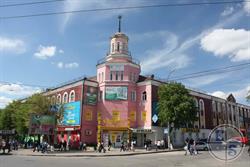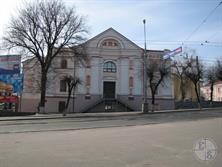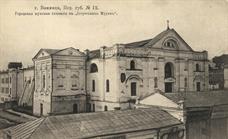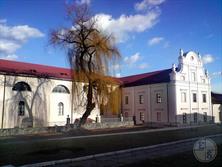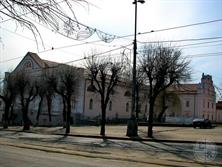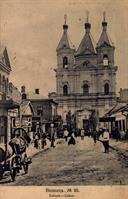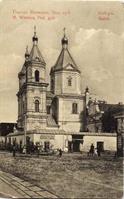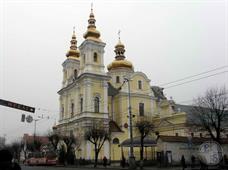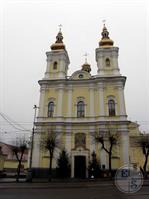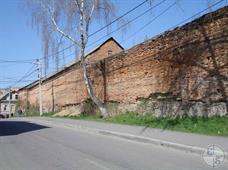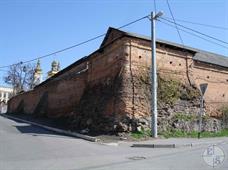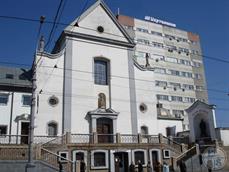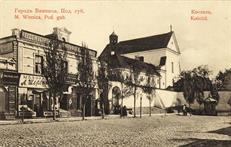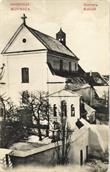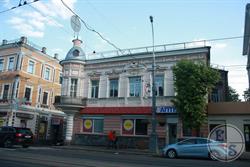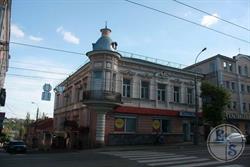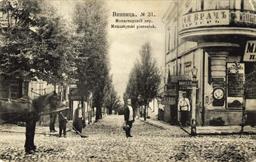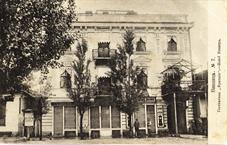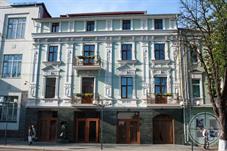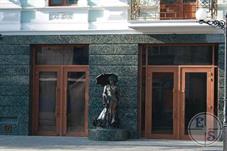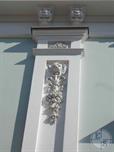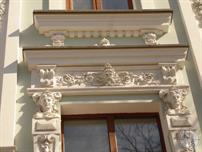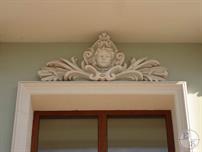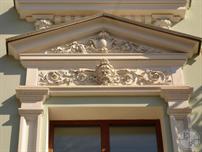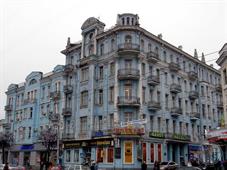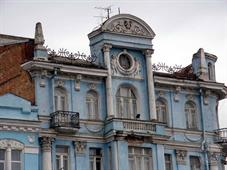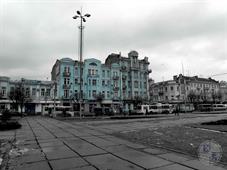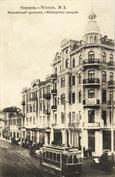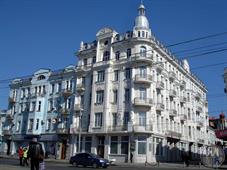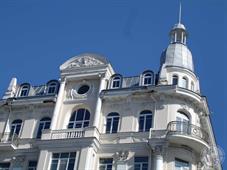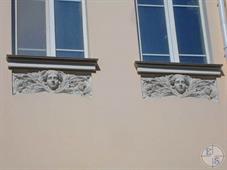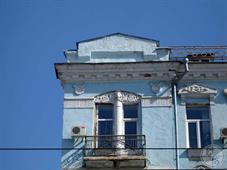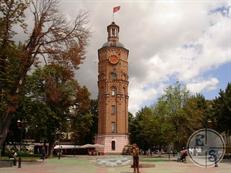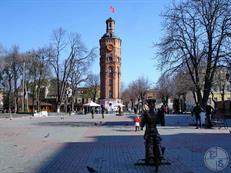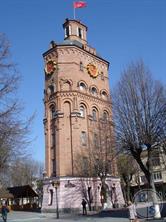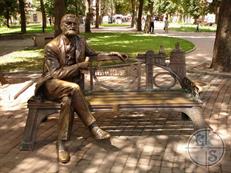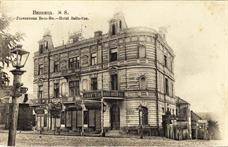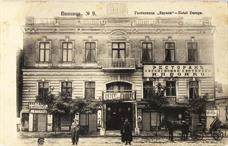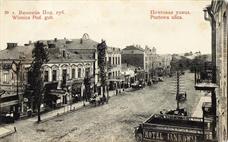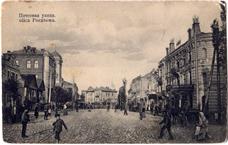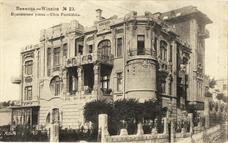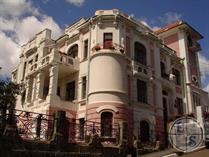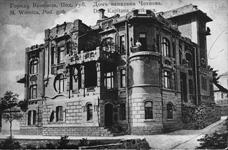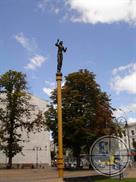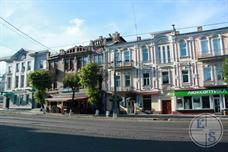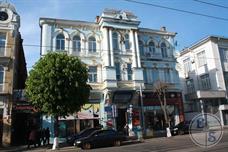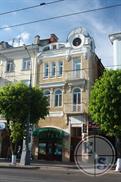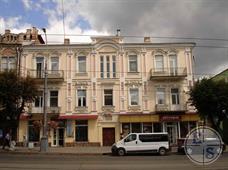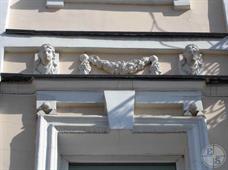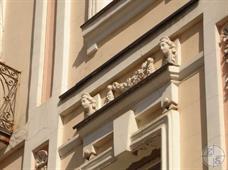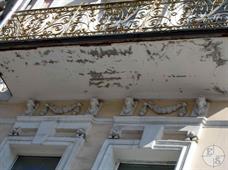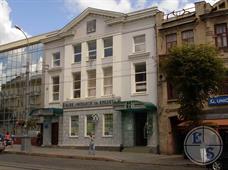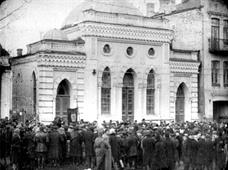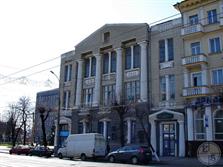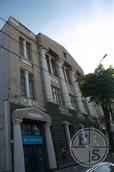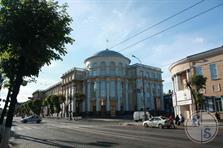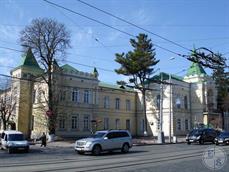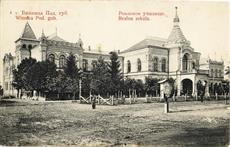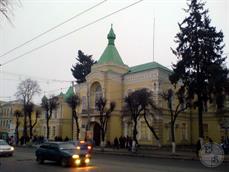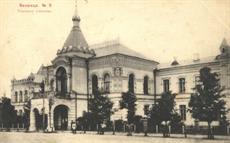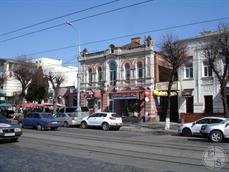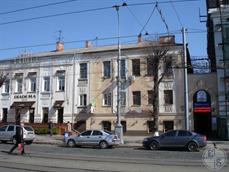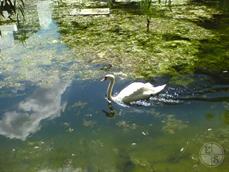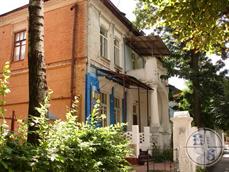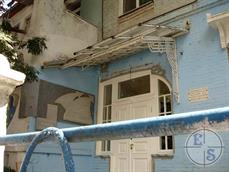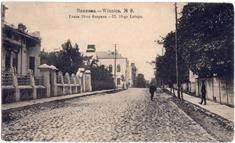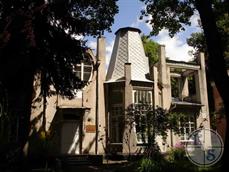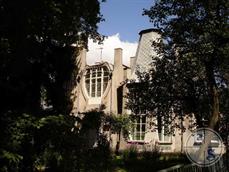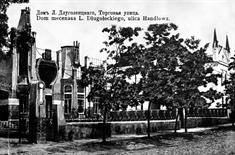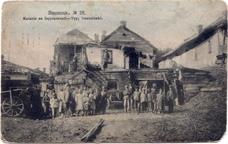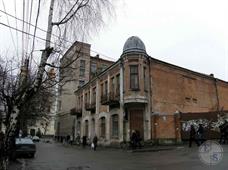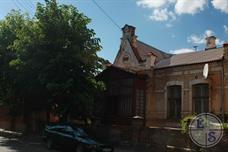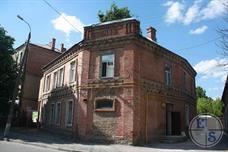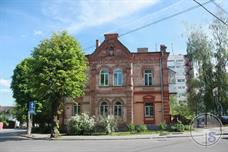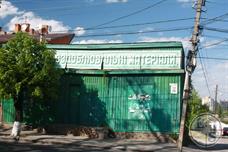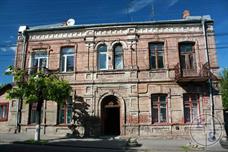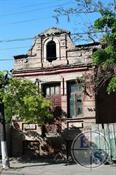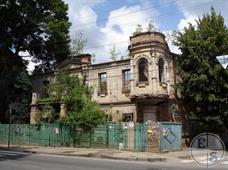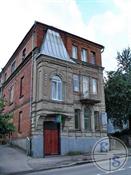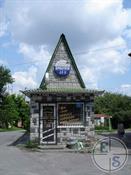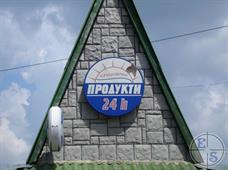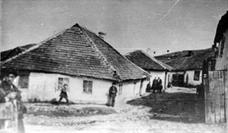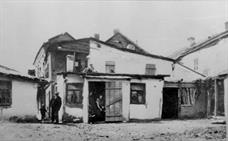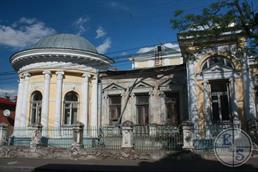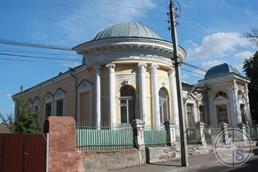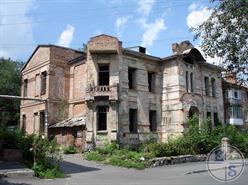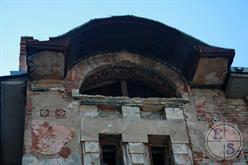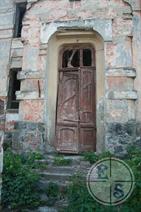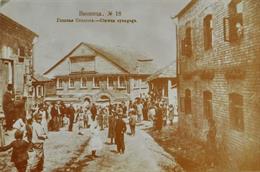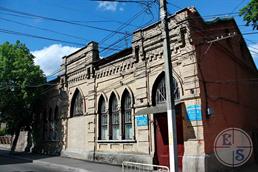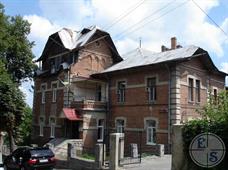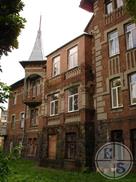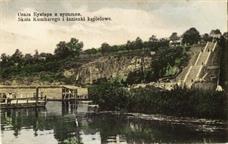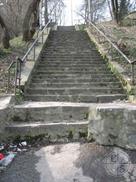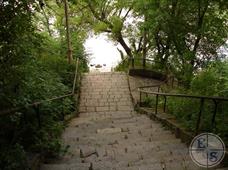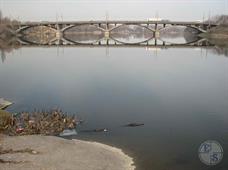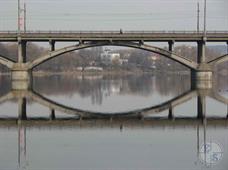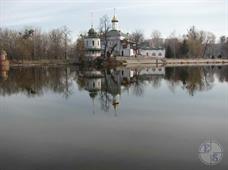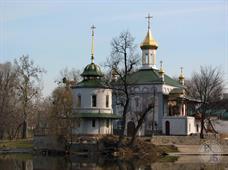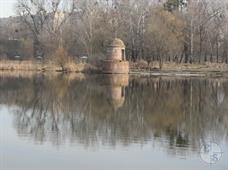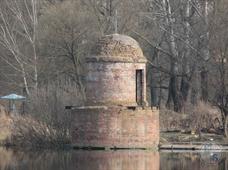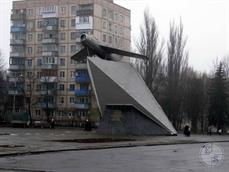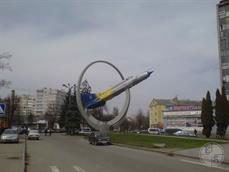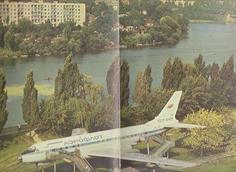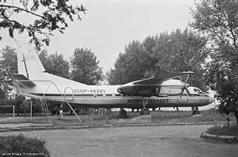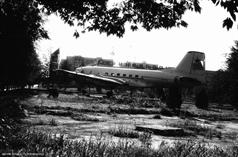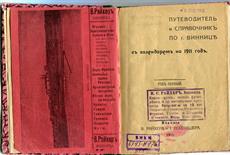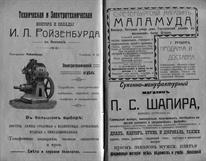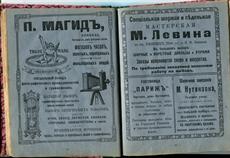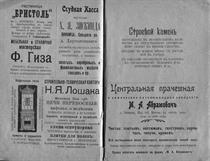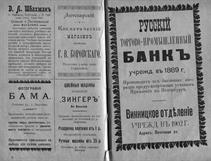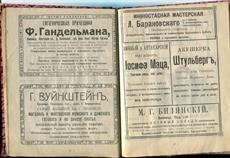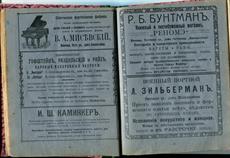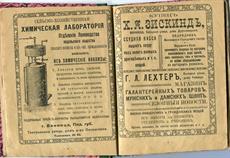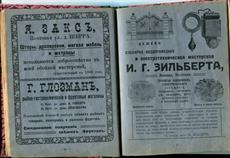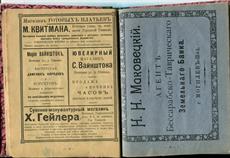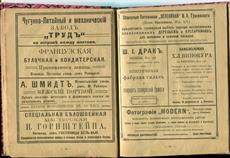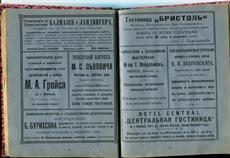

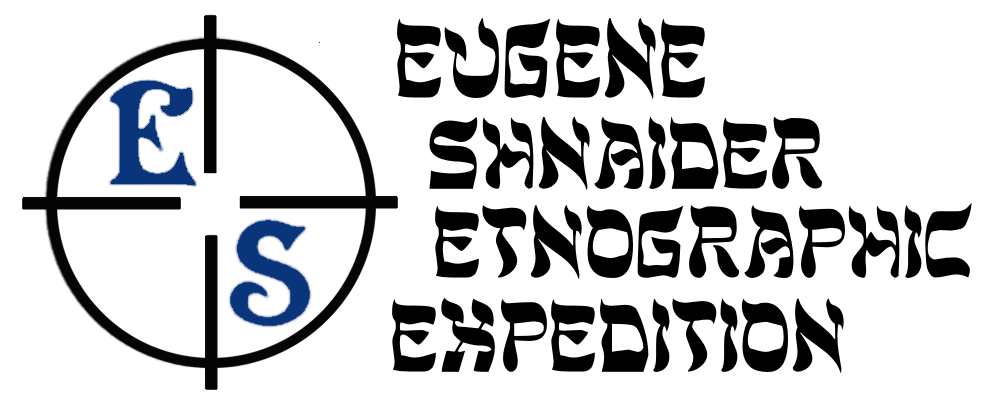


Jewish Religious community of
Zhmerinka
Ukraine, 23100, alley Khlibniy, 2
All rights reserved
Vinnitsa
Vinntsa, 2010-2015
In the 14th century the Lithuanian Grand Duke Algirdas nephews built on reclaimed uncle from the Mongol-Tatar lands walled city, among which was and Vinnitsa.
In the mid-15th century Vinnitsa officially became a city and began to enjoy the Magdeburg law. However, in 1580 letters were burned. 60 years vinnichane its Magdeburg Law argued and defended, and restored after 1640.
In the 16th - 17th centuries. Vinnitsa passed from Poland to Turkey and back to Poland. In 1793, during the second partition of Poland, Vinnitsa was ceded to Russia and became a provincial city. Later, her "demoted" to the district town and center of the province became Kamenetz.
In 1914 Vinnitsa again gained the status of an administrative center and became the center of Podolia. And already during the Soviet era to the present day Vinnitsa - the regional center of Vinnitsa region.
In the mid-15th century Vinnitsa officially became a city and began to enjoy the Magdeburg law. However, in 1580 letters were burned. 60 years vinnichane its Magdeburg Law argued and defended, and restored after 1640.
In the 16th - 17th centuries. Vinnitsa passed from Poland to Turkey and back to Poland. In 1793, during the second partition of Poland, Vinnitsa was ceded to Russia and became a provincial city. Later, her "demoted" to the district town and center of the province became Kamenetz.
In 1914 Vinnitsa again gained the status of an administrative center and became the center of Podolia. And already during the Soviet era to the present day Vinnitsa - the regional center of Vinnitsa region.
The first documentary evidence of the Jews in Vinnitsa are 1532 In the middle of the 17th century. in the winery were several dozen Jewish families. In June 1648 troops Khmelnitskogo took Vinnitsa. All Jews who had not managed to flee the city, were destroyed. In subsequent years, the Jews again began to settle in the winery. In 1743 and 1750 many Jews were killed during the raids Haidamaks.
Despite the disaster, and the Jewish population in the city and in the county has grown rapidly. In 1767 in Vinnitsa he lived 691 Jews, in 1847 - 3882 the Jew, in 1863 - 3633 Jews. In 1897, there were 11,689 Jews in Vinnitsa (more than 36% of the population) and around the Vinnitsa district 31,035 Jews.
The most common occupation among the Jews of Vinnitsa was tailoring craft and trade in agricultural products.
In October 1905, in Vinnitsa was vandalized, resulted in human casualties.
In 1910 the city operated 17 synagogues, two private Jewish schools of female, male primary school. During the Civil War, 1917-21 years. power in the winery changed repeatedly. The Jewish population suffered from extortion and looting various authorities, from the extremes of the policy of war communism, the pogroms, the largest of which occurred August 30, 1919
Despite the disaster, and the Jewish population in the city and in the county has grown rapidly. In 1767 in Vinnitsa he lived 691 Jews, in 1847 - 3882 the Jew, in 1863 - 3633 Jews. In 1897, there were 11,689 Jews in Vinnitsa (more than 36% of the population) and around the Vinnitsa district 31,035 Jews.
The most common occupation among the Jews of Vinnitsa was tailoring craft and trade in agricultural products.
In October 1905, in Vinnitsa was vandalized, resulted in human casualties.
In 1910 the city operated 17 synagogues, two private Jewish schools of female, male primary school. During the Civil War, 1917-21 years. power in the winery changed repeatedly. The Jewish population suffered from extortion and looting various authorities, from the extremes of the policy of war communism, the pogroms, the largest of which occurred August 30, 1919
In 1926, the city had 21,800 Jews (out of the total population of 58 000). Religious and community life has ceased, but actively developing Jewish cultural activities in Yiddish, to the extent permitted Evsektsiia. It published the newspaper "Proletarisher Emes," a Jewish Pedagogical Institute, the Jewish primary and secondary schools, Jewish library. In 1929, the Jewish section at the workers' faculty was opened.
By the end of the 1930s. This activity began to decline sharply. Many Jewish communists were arrested during the terror late 30s.
In 1939 the Jewish population of Vinnitsa was 33 150 people.
By the end of the 1930s. This activity began to decline sharply. Many Jewish communists were arrested during the terror late 30s.
In 1939 the Jewish population of Vinnitsa was 33 150 people.
July 19, 1941 Vinnitsa was occupied by German troops. Part of the Jewish population managed to evacuate. Around 9,500 Jews of Vinnitsa region were drafted into the army. The city was created by the Judenrat. The Jewish population was placed in the ghetto.
July 28, 1941 in the town of 146 Jews were shot. In August, the shooting resumed. September 22, 1941 most of the prisoners Vinnitsa ghettos were destroyed (about 28 000 Jews). They were left alive craftsmen, laborers and technicians, whose work was required by the German occupation authorities.
The use of the Jewish experts discussed at a special meeting in Vinnitsa in early 1942, participants of the meeting noted that the city is five thousand Jews in their hands "all trades ... they also work in all enterprises of vital importance." Head of the city police said that the presence of Jews in his city are very concerned, "because the construction [bid Adolf Hitler] under construction here is in danger due to the presence here of the Jews."
April 16, 1942, almost all the Jews were shot (left alive only 150 professionals of the Jews). The last 150 Jews were killed August 25, 1942 Many Jews hiding in the city participated in the citywide underground.
July 28, 1941 in the town of 146 Jews were shot. In August, the shooting resumed. September 22, 1941 most of the prisoners Vinnitsa ghettos were destroyed (about 28 000 Jews). They were left alive craftsmen, laborers and technicians, whose work was required by the German occupation authorities.
The use of the Jewish experts discussed at a special meeting in Vinnitsa in early 1942, participants of the meeting noted that the city is five thousand Jews in their hands "all trades ... they also work in all enterprises of vital importance." Head of the city police said that the presence of Jews in his city are very concerned, "because the construction [bid Adolf Hitler] under construction here is in danger due to the presence here of the Jews."
April 16, 1942, almost all the Jews were shot (left alive only 150 professionals of the Jews). The last 150 Jews were killed August 25, 1942 Many Jews hiding in the city participated in the citywide underground.
After the war, Vinnytsia became a major industrial city. In 1946-49. Vinnitsa functioning synagogue, which was closed in 1949 due to an extended government accusation of "violating the legislation on cults." It was reopened in 1953. In 1959, the winery, there were 19 500 Jews (16% of the population).
Since 1971 part of the Jews of Vinnitsa began to seek the right to emigrate to Israel, and began, though in relatively small amounts, Aliyah. Fearing the spread of the trend towards aliyah among Jews of Vinnitsa and trying to intimidate them, the authorities arrested in 1972 by engineer Isaac Shkolnik, who wanted to emigrate to Israel. On false charges of spying for Israel and anti-Soviet agitation I. Shkolnik he was sentenced in 1973 to ten years in a forced labor camp with a strict regime (in appeal sentence was reduced to seven years).
Since Ukraine gained independence (1991) the city was reborn Jewish cultural life were founded various Jewish organizations. In 1992, the mayor of Vinnitsa was elected Jew D. Dvorkis. In the late 1980s - early 2000s. most of the Jews of Vinnitsa emigrated to Israel, Germany, the United States and other countries. According to Census 2001, the population of 1700 in Vinnitsa Jews (0.5% of the total population of the city).
Since 1971 part of the Jews of Vinnitsa began to seek the right to emigrate to Israel, and began, though in relatively small amounts, Aliyah. Fearing the spread of the trend towards aliyah among Jews of Vinnitsa and trying to intimidate them, the authorities arrested in 1972 by engineer Isaac Shkolnik, who wanted to emigrate to Israel. On false charges of spying for Israel and anti-Soviet agitation I. Shkolnik he was sentenced in 1973 to ten years in a forced labor camp with a strict regime (in appeal sentence was reduced to seven years).
Since Ukraine gained independence (1991) the city was reborn Jewish cultural life were founded various Jewish organizations. In 1992, the mayor of Vinnitsa was elected Jew D. Dvorkis. In the late 1980s - early 2000s. most of the Jews of Vinnitsa emigrated to Israel, Germany, the United States and other countries. According to Census 2001, the population of 1700 in Vinnitsa Jews (0.5% of the total population of the city).
Walk №1 with a slight Jewish bias)
Just opposite the train station we were met by a magnificent structure. Today banal market is located here, but the story is much more interesting buildings. It was built by a rich Jewish Enterpreneuer Baruch Lvovichem a factory called "The Hammer." It was the iron foundry, which manufactures equipment for various plants and parts for agricultural machinery.
Even in Soviet times Tractor units was based on his base, but in the 90s it suffered the same fate as most of the other plants in the former Soviet Union ...
Even in Soviet times Tractor units was based on his base, but in the 90s it suffered the same fate as most of the other plants in the former Soviet Union ...
We walk down the main street until you reach the Southern Bug. Where all the fun begins.
Just across the river is a complex of "Mura". The name itself says that once there was a defensive wall, which almost did not survive. But the preserved former Jesuit monastery, built in 1613
Just across the river is a complex of "Mura". The name itself says that once there was a defensive wall, which almost did not survive. But the preserved former Jesuit monastery, built in 1613
In 1621, near the Jesuit Dominican monastery was built. Now it is the Transfiguration Cathedral. If you bypass it on the side, you can see those "ramparts" - the remains of the wall with a corner tower.
And then, on the right side, there is another church, built in 1745 Vinnitsa elder Louis Kalinovsky for the Capuchin Order
Opposite the church, at the intersection of Cathedral and Kropivnitskogo (earlier - Street and Lane Postal Monastic), is a nice old mansion. Previously, there was practicing dentist known nationality, and says what the sign with the name over the door.
We continue to walk along the main street - the Cathedral. On the right see the restored building of the former hotel "France"
The most elegant building in Vinnitsa - is, of course, the hotel "Savoy". It was built by order of the rich Jew Berisha Markovic Lekhtman in 1912, the architect of this building became Artynov, according to the drawings of which are built almost all of the most famous buildings in Vinnitsa. The original hotel was built in six floors (currently 5), and it was only at that time the building with electric lift. Here, while the headquarters of Petliura.
Depending on the time of year it changes color) corner towers, as we see, was restored recently.
Depending on the time of year it changes color) corner towers, as we see, was restored recently.
The same, in the depths of the park, and is the main symbol of Vinnitsa - Tower. The water tower was built in the early 20th century designed by the same Artynov. The architect himself is sitting side by side, watching, so to speak)
And on the opposite of the "Savoy" side of the street Cathedral it was once 2 more beautiful hotels, which to date have not survived - "Europe" and "Belle Vue". Street Postal - a modern Cathedral sq. is
Well, if we have already switched to this side, it is definitely worth a little walk down the street. Pushkin near the city hall, and look at the former mansion Chetkova captain. Today, here urban governance architecture. It was built in 1910 by architect Gregory Artynova. Alexander M. Chetkov was a retired officer - gunner, came to Vinnitsa in the early 20th century. Settling in the winery, he taught gymnastics in the Real School.
And we go back to the cathedral. It is the center of the city, and there remained still a lot of beautiful old buildings, mostly - former apartment houses. The most famous of them - apartment house of Virgilis. Next - greatly remodeled the building of the central synagogue.
Not far from the town hall is a modern building, which housed the city before administration. Designed it, of course, Gregory Artynova) Today there is Universal Trading Exchange. January 17, 1917 this is where Soviet power was proclaimed in the winery.
On the right side we see the modern building of the regional administration.
On the right side we see the modern building of the regional administration.
Then there is something more interesting. Vinnitsa trade and economic institution housed in the former premises of a secondary school - the largest educational institution in Vinnitsa that time, open, or rather transferred from Mogilev-Podolsky, in 1888. While real school only began to appear. They differ from the classical lay in the fact that the students were given general education and technical knowledge, taking into account the specifics of the area, but instead of classical Latin and Greek languages taught English, German and French.
The building was built on the money of merchant Tsalya Leibowitz Weinstein. Weinstein bequeathed all his property for the construction of a building for the school. Many sources indicate that Tsal Leibowitz took all this in memory of the deceased's son, who studied at the St. Petersburg Technical University.
In gratitude to the city government in 1911 was named after one of the Weinstein city streets. Today it Kamianiec alley - between streets Theater and Grain.
The building was built on the money of merchant Tsalya Leibowitz Weinstein. Weinstein bequeathed all his property for the construction of a building for the school. Many sources indicate that Tsal Leibowitz took all this in memory of the deceased's son, who studied at the St. Petersburg Technical University.
In gratitude to the city government in 1911 was named after one of the Weinstein city streets. Today it Kamianiec alley - between streets Theater and Grain.
Opposite the school there are several mansions, which is now in stores. Behind them begins the city park. Before the entrance to the park - a small beautiful lake with a bunch of all living creatures - swans, turtles and fishes hefty unknown nationality)
Walk №2. Yerusalimka and not only
We will start it from the intersection of Cathedral and the street Architect Artynova. According Artynova go to the beginning (zh.d.vokzal we remain on the right side). There nahodtsya house, which belonged to a very famous person - Alexey A. General Brusilov, the famous author of operations during the First World War, which went down in history as "the Brusilov breakthrough"
And almost immediately attracts the attention of the building standing nearby children's art school, on Pervomayskaya street. Once the house belonged to the captain Dlugolensky and designed it all the same Artynov
Continue on Pervomayskaya towards the Southern Bug, we go to one of the oldest and most interesting areas of the city - Vinnytsia Yerusalimka. Who lived here - the name is easy to understand)
At the end of the XIX century in the winery, the provincial town of Podolsk province, about 23 thousand inhabitants, more than half were Jews. Yerusalimka, poor Jewish quarter, began to be built at the end of the XVIII century as handicraft suburb of Vinnitsa.
At the end of the XIX century in the winery, the provincial town of Podolsk province, about 23 thousand inhabitants, more than half were Jews. Yerusalimka, poor Jewish quarter, began to be built at the end of the XVIII century as handicraft suburb of Vinnitsa.
Immediately I lived mentioned earlier the owner of the plant "Hammer" Boruch Lvovich. One of the richest people in Vinnitsa, he sponsored Jewish schools and gave money for a dowry to the poor Jew. Now here Radio House.
Opposite the house is falling apart Lvovicha another historic building - a former post office. A pattern under the roof well, very similar to the Star of David ...
In Vinnitsa there were 13 synagogues and prayer houses. In addition to the central synagogue Livshits on Yerusalimka survived another synagogue. Located on the street Chervonohrestovskoy
Then we go back to the street Pervomayskaya but Kozitskogo. On it you can go to the Tower and civilization, but! Our path lies in the other direction, to the Southern Bug. And we come to another interesting and very beautiful place Vinnytsia - "Potemkin" and rock stairs Kumbaro.
I designed these steps Gregory Artynov in the early 20th century. And next to them is another monument of architecture, also designed Artynova - House Odessa merchant Kumbaro (now the Children's Clinic №1).
Near the foot of the stairs, to the left, it was the beach - bathing.
I designed these steps Gregory Artynov in the early 20th century. And next to them is another monument of architecture, also designed Artynova - House Odessa merchant Kumbaro (now the Children's Clinic №1).
Near the foot of the stairs, to the left, it was the beach - bathing.
And one more thing. Vinnitsa - a city of the pilots, and there is as much as 2 aircraft monument. And before that, there were 5 !!!
to be continued
historical information and old photos taken here
historical information and old photos taken here
Directory of Vinnitsa, 1911. Business names of almost all the very typical ...
Vinnitsa Region

My shtetl
My shtetl
Jewish towns of Ukraine
Jewish towns of Ukraine
- Home
- Shtetls
- Vinnytsya region
- Volyn region
- Dnipro region
- Donetsk region
- Zhytomyr region
- Zakarpattya region
- Zaporizhzhya region
- Ivanofrankivsk region
- Kyiv region
- Lviv region
- Luhansk region
- Odesa region
- Rivne region
- Sumy region
- Ternopil region
- Kherson region
- Khmelnytskyi region
- Chernihiv region
- Chernivtsi region
- Crimea
- Jews in Europe
- Services
- Articls & Gallerys
- Contact
